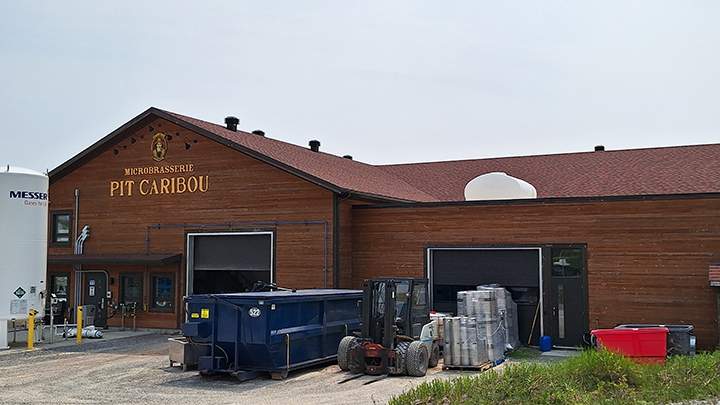A new Regional Minister for the Gaspésie
Nelson Sergerie, LJI
GASPÉ – Premier François Legault has entrusted the Gaspé Peninsula and Magdalen Islands to a new addition to the cabinet: the Member of the National Assembly (MNA) for Rivière-du-Loup-Témiscouata, Amélie Dionne.
Ms. Dionne will also hold the Tourism portfolio in addition to being the Minister Responsible for the Lower Saint Lawrence region.
Daniel Côté, the mayor of Gaspé, notes that Ms. Dionne is the only minister who will have two administrative regions under her wing.
“The Premier has chosen to no longer have a minister in Eastern Quebec, except for Ms. Dionne, who is in Rivière-du-Loup, in the western part of Eastern Quebec. “This is taking us further and further away from power,” notes Daniel Côté.
“Basically, I think that no matter the region of Quebec it should have its own regional minister. The two MNAs from the Côte-Nord sit in the cabinet. Here, it’s not the Premier’s choice (he will be responsible for another region), and he’s imposing a minister responsible for two mega-regions. That’s where the problem lies. It’s as if the Gaspé were being submerged in the Lower St. Lawrence, and as citizens of the Gaspé, we’ve never liked that because there are different realities,” criticizes the mayor of Gaspé.
He is citing as examples Ian Lafrenière, an MNA based in Montreal who covers Northern Quebec, and François Legault, who is the Minister Responsible for Abitibi-Témiscamingue.
With Donald Martel at the Ministry of Agriculture Fisheries and Food (MAPAQ), Mayor Côté believes the new member of the cabinet has good contacts in the region, and he feels he would be able to raise awareness of fisheries issues.
As far as the new Minister of Municipal Affairs, Geneviève Guilbault, Daniel Côté says he has spoken with her in the past and he is under the impression that she understands the issues very well.
On the rail front, with Jonatan Julien now Minister of Transport, the mayor of Gaspé is confident, especially since he was also the Minister Responsible for the Gaspé region, with whom relations were good.
Eric Dube, the mayor of New Richmond and president of the Société du chemin fer de la Gaspésie agrees with that observation. “We worked a lot with Mr. Julien on the rail issue. I think he should remember that. We should be able to establish contacts fairly quickly for the next steps.” says Mr. Dubé.
Quebec put the project back into a “study” phase in March following significant cost overruns to rehabilitate the third section.
Regarding Amélie Dionne’s arrival, Éric Dubé is giving her a chance and isn’t offended by the fact that she isn’t from the Gaspé region. “What I asked for was to have the best person to handle our issues. If the Premier decided it was her, I’ll give her a chance,” he says.
The Baie-des-Chaleurs Chamber of Commerce and Industry called for a minister from the Gaspé region. “We would have preferred to have a minister from the Gaspé region. We’re open to giving her a chance and we hope to meet with her soon to make our priorities known and for regional development to be a priority for her,” says the director, Valentine Palma.
Gaspé MNA Stéphane Sainte-Croix is relieved to see this shuffle process now a thing of the past.
“As for what’s next, we’ll roll up our sleeves tomorrow to establish strategies to meet with the new ministers as soon as possible and bring our issues to them,” says Mr. Saint-Croix.
He’s giving Amélie Dionne, with whom he spoke briefly a few minutes after her appointment as Regional Minister, a chance. The MNA for Gaspé welcomes the arrival of Jonatan Julien as Transport Minister for the rail file.
With the CAQ polling at only 11%, Mr. Sainte-Croix believes that the reshuffling of the cabinet will give his party and the government new wings. “The roadmap for what’s next is known. We’ll roll up our sleeves and do what we have to do to regain people’s trust,” he believes.
As SPEC went to press, the MNA for Gaspé was unsure whether he would remain government assistant for Fisheries under the new Minister of Fisheries, Donald Martel.
A new Regional Minister for the Gaspésie Read More »
















































